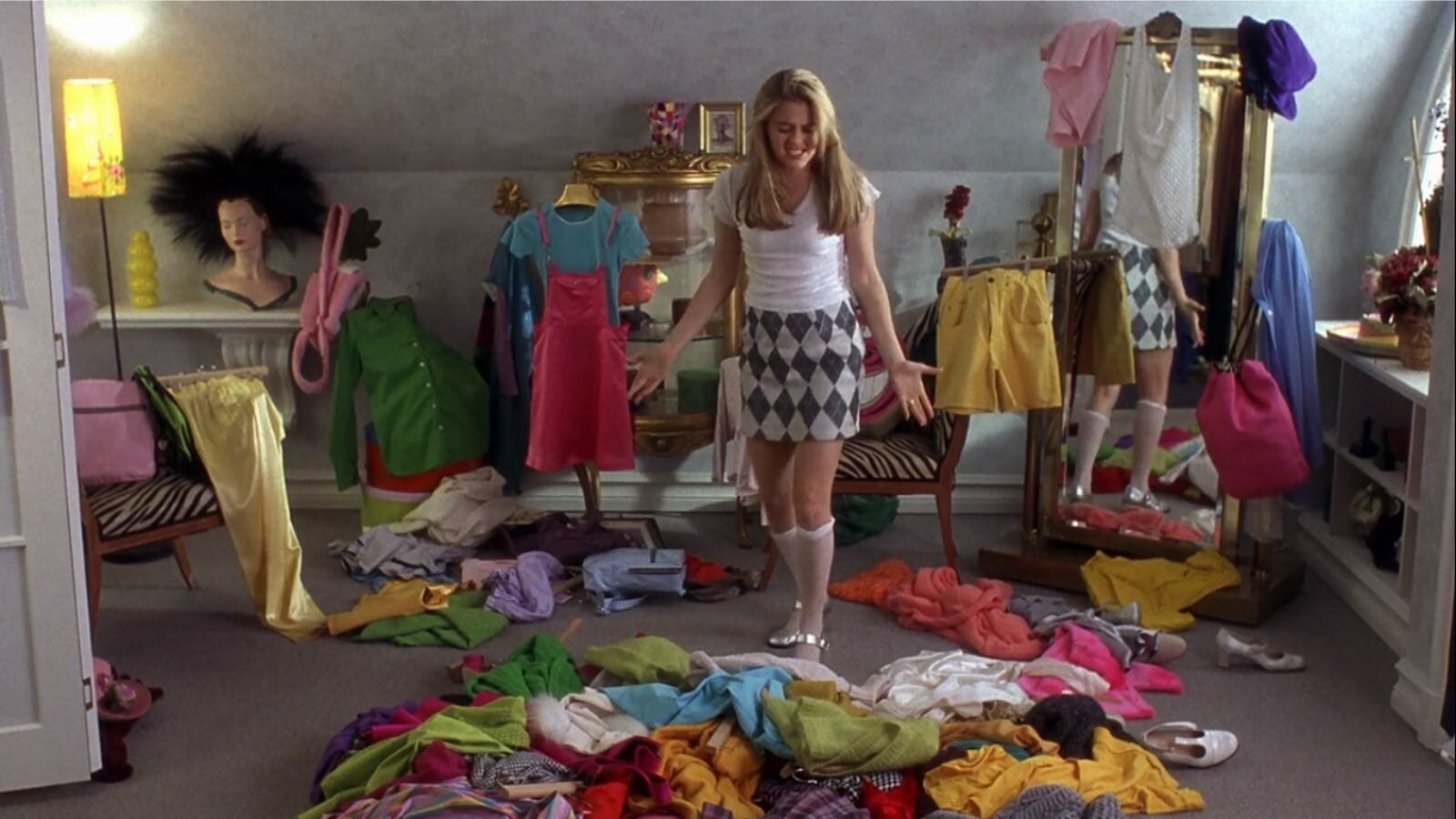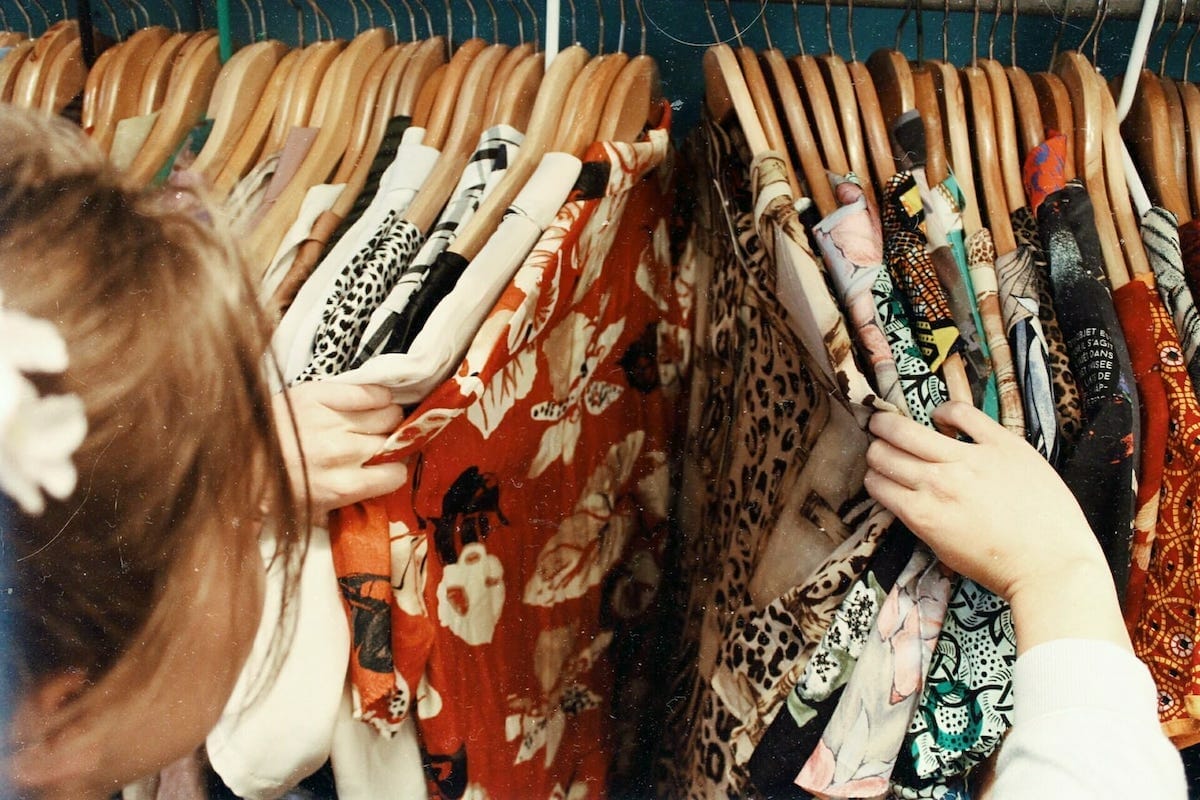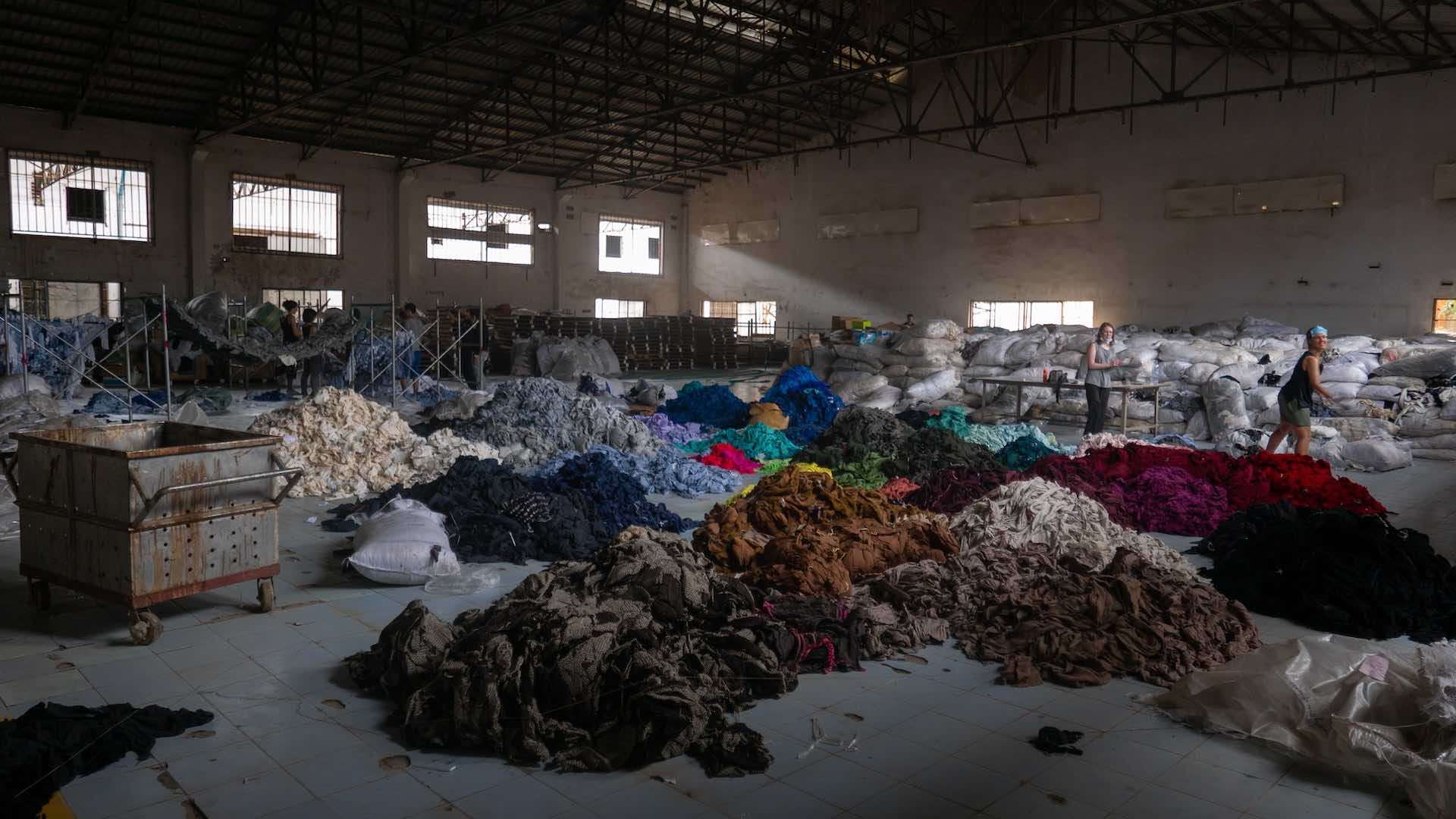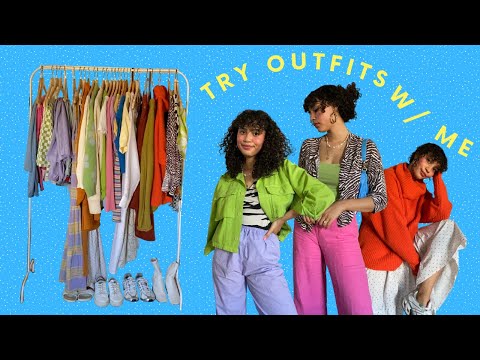
What is overconsumption and how does it show up in fashion?
To live in today’s economy is to end up entangled in a culture of overconsumption. It is to be persuaded into buying a bunch of things that we don’t need nor really want simply because they are on sale, or because we have been taught that we are valuable when we are able to partake in current trends, that we belong if we have the latest Apple Watch or Supreme Drop, all in the name of economic growth.
There is no industry where our excessive consumption habits have flourished more than in fashion. In the 1990s, people in the US were buying 40 garments per person per year. By the mid-2000s they were acquiring 70 garments a year. Since the 2000s, clothing production has doubled and the number of times each item is worn has decreased by 36%.
And it is the wealthiest countries like Australia, Japan, the UK, and the US that carry the bulk of consumption. Within them, top earners are the ones whose lifestyle is fueling the most fashion consumption and the biggest carbon footprint, with 40% of the total carbon footprint.
This has been driven in part by the artificially low prices ultra-fast fashion brands achieve by producing 100 billion new items a year, in a race to the bottom to see who can offer the lowest prices, without accounting for clothing makers’ well-being, or the finite resources of the earth.
However, overconsumption isn’t all about price, it’s also a question of psychology. Think about those annoying posts asking who wore it best, the pressure not to wear the same outfit twice, or Shein Haul videos which have amassed 4.5 billion views on Tiktok.
We are seduced by fleeting trends into believing that having infinite choices will make us happy. But what if that’s a lie?
Do we have commitment issues with our clothes?

We use the phrase commitment issues to describe people or aspects of our dating lives, but have you ever considered we might have commitment issues regarding our clothes? With super fast fashion retailers like ASOS dropping 7,000 styles a week, it is no wonder that we do.
Our shopping experience now resembles our dating one in so far as we have infinite options at the touch of our fingertips, and can always return what we bought and choose a different thing with little to no fuss, just as much as apps like Bumble or Tinder offer an experience that places little to no value on a connection by making us think we can always find someone new and better.
This is what author Peter Davis has called infinite browsing and has pointed out as one of the main behaviors of our time. He is interviewed by Dr. Laurie Santos on The Happiness Lab podcast where he explains that even though in the past we thought having the ability to jump from one thing to the next indefinitely could make us happy, research shows it actually does the opposite. This swiping attitude does not allow you to build the relationships necessary with a place or a person or a thing in order to feel a sense of belonging.
Moreover, Barry Schwartz, also interviewed in the episode, says one of the consequences of having so many possibilities before us is choice paralysis. If you’ve ever spent thirty minutes trying to choose something to watch on Netflix only to realize it’s already too late to watch anything, it has happened to you too.
It is a feeling of overwhelm that leads to putting off making a decision because you fear making the wrong one. A fear that comes from our well-meaning but ultimately wrong brain that perceives a threat and is trying to do good by our future selves because it does not want us to miss out on what “could have been” a good opportunity. This is what we all know too well as FOMO: the fear of missing out. Which is that pang you get when you see your friends hanging out at a karaoke party you could have gone to but decided to stay in your jammies instead.
Schwartz also explains that even when you do make a choice you may end up more dissatisfied with it, due to the myriad of options you were first presented with. This is because with so many choices you can be haunted by the ghosts of decisions past, think that others could have been better, compare yours to the other’s positive features, or have heightened expectations that lead to finding your choice less than. Like when you finally pick a heartbreaking episode of The Crown and wish you had watched a lighter Christmas movie instead. This all leads to regret and self-blame, two things that are definitely not making us happy.
What is fast fashion and what does it have to do with excessive consumption?

When Fast Fashion brands like Zara first arrived in my country, Colombia, I was very excited because it meant wearing things that resembled the beautiful clothes I saw on the runway and the Vogue magazines I religiously bought. The idea behind it, to democratize fashion, and make it accessible to people that could not participate previously, was nice. The reality of the behavior of overconsumption it has driven, is not so nice, as Brittany Sierra explains in her podcast The Third Degree.
Fast Fashion is a business model where cheaply made clothes are produced in large volumes with quick turnover, all in order to make a profit. It is the pinnacle of planned obsolescence where both style and construction are made to be fleeting in order to generate revenue for the pockets of a few.
A large profit that sits on the shoulders of underpaid and exploited garment workers. A business that depends largely on polyester, one of the most polluting fabrics; and also leads to 81 pounds of textiles being thrown into the landfill per person, per year. As we have seen, the cost of having all of these options to stay up to date on trends is the welfare of the people who make it and an industry that’s contributing to climate change.
But what about the consequences it has on us, who buy it, and our mental health? Is having all of these clothing options making us happy, or is all this mindless consumption making us feel worse?
Is fast fashion consumption making you miserable?
To answer that, we have to go back to the notion of infinite browsing and our fashion commitment issues. We have been trained to think we will be more joyful and more successful if we have a closet filled with stuff.
We have also been encouraged to buy something new just to go to parties because god forbid we are caught dead in the same outfit, even more so if we are caught on camera. In fact, 9% of shoppers in the UK bought something just to post a pic on social media and then returned it, with returns creating as much as 5.8 billion pounds of waste and pollution in the US in just one year.

This notion that we will be happier if we are up to date on trends and are able to show status by appearing with a different thing in real life or online has been fueled by fast fashion’s offering of almost infinite possibilities at a cheap price, with retailers like SHEIN adding 6000 new styles to its website every single day.
This is the fashion consumption equivalent of the infinite browsing Peter Levine talked about. You get all of those options at $7 to $25 dollars so why would you care about that one colorful knitted sweater you bought when there are a thousand more coming your way?
Why should you conform to that one lacy red dress when the dress of your dreams might be just around the corner? The result is you end up endlessly dissatisfied with your choices, and constantly having FOMO because you think you are missing the next big thing to wear, not to mention being overwhelmed by the amounts of pieces you can choose from.
These are the consequences of having so many choices, which were posed by Davis and Schartz on the podcast, which means fast fashion ends up making us unhappy. And that’s in addition to being detrimental to the environment and the people who make our clothes.
Then why is it so hard to quit consuming so much?

According to Brittany Sierra’s series on consumer behavior, there are a couple of things that account for the fact that we keep buying great amounts of cheap clothes even if having all of those options is not in our best interest. It has to do with what makes us consume.
We consume, according to Sierra, citing Shakalia Forbes-Bell, because we want to express ourselves, to belong, to escape our insecurities, and actually feel good. This has to do with the fact that in the act itself of buying something new, the anticipation releases dopamine, one of our feel-good chemicals. Something that is fun.
This ensures we are always chasing that feeling by buying more, not realizing that this pleasure we feel is a short-lived one like the one we get when we constantly swipe on Bumble. Indeed, according to Oxfam the buzz of purchasing a new item actually lasts four wears on average.
And as Sierra says, “some fashion consumers don’t want to give up the short-term feelings, emotions, and potential social status associated with buying into trends and uninhibitedly expressing themselves through fashion for the abstract purpose and long-term benefit.”
But it doesn’t have to be this way, we don’t have to simply give up those benefits. We can feel good, get a real sense of belonging, and gain social status by committing to our clothes too.
In a long-term relationship with our clothes: How we can prevent overconsumption

If having so many options is making us feel paralyzed, miserable, or both, then committing to a person, a place, or our clothes, in this case, is the way to go to enhance our wellbeing. According to the experts on the episode of The Happiness Lab podcast, there is a myriad of benefits that come from committing to something.
- Once you choose, what you have chosen starts to open itself up to you, it becomes alive with details. Like when you start dating someone and they reveal layer upon layer of themselves, something you can only do with time and dedication.
- Choosing changes you on the inside. Your identity is rewired by making that decision. And you can find purpose through it, building a craft, or a lifestyle around it.
- You can find community and belonging in the people who have made similar choices.
- And you are better able to rationalize that the choice you made was the right one if you’ve already made it.
This is something you can find if you exercise mindful consumption and commit to building a long-term relationship with your clothes.
Reconnecting with your wardrobe for more mindful consumption

Creating a long-term relationship with our clothes is not unlike building one with a partner or a friend. It implies showing up every day and choosing that garment over and over. It implies doing the work of seeing your clothes with what Buddhists call a beginners mind: the capacity to really look at things as if it was the first time. And it means you have to care for them.
Reuse the hell out of your clothes
Looking at what we already own with that sense of discovery might mean creating new combinations out of pieces we had left forgotten in the back of our closets, or wearing garments we have worn a thousand times before in new extraordinary ways. This can lead to feeling again that sense of awe about your clothes, and self-sufficiency in knowing you can be creative in the way you dress.

Perhaps putting that lacy magenta tank top over your black turtleneck sweater could make it suitable for winter and bring out a flirtier side of the sweater. Or wearing that ruffled dress over jeans can make it look more casual and feel better for fall weather.
Rewearing your clothes can be the antidote to the fact that 25% of our closet is left unused, according to the Hot or Cool Institute. This is sad not only because it leaves great pieces unloved, but also because re-wearing what you own can have a huge effect on reducing fashion CO2 emissions and conserving virgin natural resources.
One example of this is how advocate and sustainable fashion author of the book Consumed, Ajá Barber, shows the ways she puts together her clothes on her Instagram. With the hashtag GetDressedWithMe, she posts videos arranging looks from pieces she has had for years, and writing the stories behind the pieces and brands she wears. With this series she shows there should be no shame in re-wearing, and that anyone can access the pleasure that can come out of reimagining your look with what you already own.
Listening to the stories of your clothes
Secondly, that commitment can be strengthened by finding the stories behind your clothes or thinking about the ones you have built in them, by pondering on the relationships built into your clothes: Was that sweater you love woven by a Peruvian artisan from regenerative wool? Was that quilted jacket made by your grandmother? Did you inherit those earrings from a dear friend that now lives overseas? Was that the dress you wore on your first date with your now partner?
Asking questions like these can bring out the people and stories that relate to our clothes and make us forge a closer relationship with them, bringing up their emotional value in our eyes and keeping us from easily discarding them.

One example of this is how the global fashion activism movement Fashion Revolution has been encouraging citizens to ask brands who makes their clothes and what materials are in them. Another one is the series called Worn Stories, based on the book of the same name, where people share what they have lived in their clothes, like the one about the yellow sweater that makes a woman feel younger, more alive, and like she belongs.
A third example is a brand, KNOWN SUPPLY, that lets you meet the person who made your clothes. Born out of a need to rehumanize the fashion industry, they put a face and a story to the hands that make our clothes.
Repair your items
Thirdly, you can further foster your relationship with your wardrobe by repairing the things that have inevitably succumbed to some wear and tear, either by learning to do it yourself or by finding a seamstress or a cobbler in your neighborhood, turning from consumer to producer and community builder. With a pair of jeans, for example, you can patch it up, embroider over a stain or a hole, or even cut them off and make them into shorts and quilt the rest of the fabric into a bag. Learning how to repair your clothes can be a great way to feel more confident and independent, pick up a new hobby, and meet like-minded upcyclers.

Looking for a local crafter can also help enhance a sense of community by giving back to businesses near you. In fact, there is a new wave of cobblers that have a Youtube presence and mailing services. There are a lot of influencers already showing how to mend and there’s even a book that teaches you how to make your own clothes: The Open Source Fashion Cookbook. It has recipes at home with patterns made by designers like Christopher Raeburn.
Aside from giving you a newfound sense of self-sufficiency and helping your community, repairing and re-wearing that manages to extend the average life of a garment by nine months can reduce up to 25% of the annual carbon emissions, according to WRAP. You effectively reduce waste by keeping a garment in use that would have otherwise ended up in a landfill.
For more ideas check out 10 Ways to Repair or Repurpose Old Clothes.
Buy less, buy better

Finally, if you want to buy something new you can adjust your buying habits by investing in fewer good quality items, instead of buying a bunch of low quality fast fashion, which is made to be discarded. I still own a golden Dior outfit my grandmother bought because my grandfather told her it was better to buy one well-made piece that she would cherish than a million cheap ones. He was right.
You can choose to buy a great pair of white sneakers that are built to last, and be recycled by the time you are done with them, or a pair of leather boots made ethically by expert artisans in Perú. Either of these choices would be easy to commit to since they are built to be by your side and even inherited by your loved ones. They are crafted with sustainability in both style and construction, and you’d know the story of how they are made, and by whom.
However, we know it is not easy to find brands that are actually working on sustainability and delivering slow fashion amongst the sea of offers and greenwashing. Indeed, according to Katherine White, interviewed by Brittany Sierra, one of the reasons that people are dissuaded from buying sustainable clothing is that it is not the default option for the run-of-the-mill consumer.
In the Eco-Stylist brand directory, all that work to find the perfect sustainable piece is done for you. No need to get into the weeds. All you have to do is curate your new pieces in a way that makes sense for you and your closet. Below are a couple of ways you can do this.
What is a capsule wardrobe?
A capsule wardrobe implies curating a collection of interchangeable pieces you can wear in different ways, in order to maximize the combinations you can get out of a small number of garments.
In order to do it you set a goal of the amount you want to own, like 10 pieces. Select the season: spring-summer or fall-winter. Decide on the ratios: 20% pants, 70% shirts, and 10% layers. Finally, choose versatile colors. Here’s a simple guide and some sustainable brands you can choose from in order to create it.

Sufficiency Wardrobe
Recently, the Hot or Cool institute released a report where it delves into our fashion habits and what would be the most impactful way to reduce our greenhouse gas emissions. Even though it outlines that it is the richest 20% that causes the most emissions with their clothing shopping patterns, we could all benefit from using one of the solutions they propose: consume less and curate our closet into what they call a sufficient wardrobe. This is the number of clothes that you should own and buy to stay within climate limits and still be able to have a dignified social life.
The report proposes that such a wardrobe would include “74 garments in a country with two seasons and 85 in a country with four seasons. That includes shoes, but not accessories or underwear”. This would look like having six outfits for workwear, three outfits for homeware, five outfits for sports/activewear, two outfits for festive occasions, and four outdoor jackets plus trousers/skirts. And it means only buying five new pieces a year.
These practices could make your long-term relationship with your clothes blossom, not to mention add to building a better fashion system and society for future generations.
Where to Buy Clothes You Can Commit To
We know it can be daunting to swim in the stream of never ending clothes and brands.
Check out our Shop and our Brand Guide for high quality, pre-vetted clothes and shoes you can be proud of wearing. Every fashion brand on our website is thoroughly researched so you know they are making a good impact on people and the planet.
Key Takeaways
- Fashion overconsumption has reached record levels. We have more clothes and wear them half as much.
- We are being seduced by the infinite cycle of micro trends, enabled by the speed of changing content on platforms like TikTok. Low rise jeans might be all the craze today, but they can be outshined in a matter of weeks by printed ones.
- This overconsumption is lead by fast fashion’s low prices and capacity to quickly mimic those microtrends enabling infinite choices, something we *think* makes us happy.
- But science shows that these infinite choices are actually bad for our mental health. They paralyze us or leave us feeling dissatisfied no matter what we choose.
- By committing to buying less, buying higher quality clothes, and taking care of them, we not only honor people and planet, we can also improve our own happiness.
Are there any other ways in which you foster a deep connection to your wardrobe? Let us know in the comments.

Adela is a Colombian storyteller, content maker, strategy consultant, & event producer, specializing in sustainable fashion, mental health, and gender issues.










